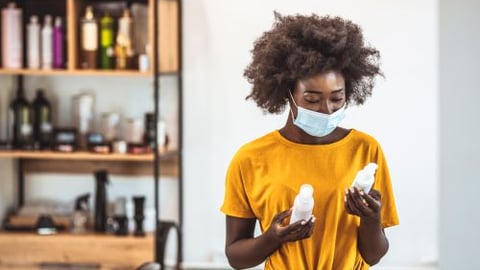How Crocs Gave Away $40 Million Worth of Shoes in 45 Days with Free Pair for Healthcare
The COVID-19 health crisis has proved to be a time of quick pivoting and operating with purpose within the consumer goods industry, and Crocs ticked both boxes with its viral Free Pair for Healthcare initiative.
Over a period of just 45 days, the footwear retailer and manufacturer donated over 860,000 pairs of its Classic clogs to healthcare workers — a feat made even more impressive given its ideation-to-execution timeline of a mere five days.
As consumers hunkered down to help slow the spread of the coronavirus in March, the Crocs team quickly became aware of requests across social media from healthcare workers seeking the squishy footwear, chiefly because of their comfort and easy cleaning. Heidi Cooley, Crocs head of global marketing, tells CGT the company quickly recognized it as a moment to step up and do its part.
“As we started to talk about it as a brand, we first went back to our DNA,” she says. “Providing comfort is inherently in our DNA, and our brand vision is that everyone should be comfortable in their own shoes.”
See also: How Ferrara Slashed Development Costs by 70% to Stay ‘Ferrara Fast’
Five days later, the company officially launched the Free Pair for Healthcare program, offering healthcare providers a free pair via an online form (shipping included). It committed to shipping between 10,000 and 20,000 shoes a day, marking the capacity of its regional distribution center.
Of the 860,000 pairs that were donated between March 25 and May 29, 650,000 were distributed in the U.S., with the rest shipped globally to hospitals and healthcare facilities. In total, the donated shoes carried a retail value of $40 million.
From a logistics standpoint, Mike Feliton, senior VP and chief information officer, says the company was able to execute so rapidly by identifying a dedicated group of cross-functional resources to own each piece. The entire company then rallied around the program to provide the proper support and ability to prioritize as needed.
“We also creatively utilized existing technology platforms and partnerships — Salesforce, Queue-It, SAP, Manhattan — which allowed us to quickly build and launch the experience,” he adds. “Daily execution was definitely not easy, but its success is an example of what a talented and dedicated team can do when they are focused and supported in achieving a common goal.”
Watch: Hershey Acquiring PPE Manufacturing Line
The program was also helped to success thanks to several of Crocs’ retail partners, including Zappos, Famous Footwear and Shoe Carnival, all of which aided either through shipping and logistics, sponsoring a day of donations, or providing a set amount of donations for every pair sold. Crocs celebrity brand ambassadors, including actress Priyanka Chopra Jonas and musician Luke Combs, also helped raise awareness and distribute shoes.
See also: Kraft Heinz Wins with ‘Ridiculously Slow’ All-Red Puzzle Social Campaign
In driving awareness of the campaign, Crocs was able to rely solely upon organic social media and PR efforts. During the 45 days, the company’s Instagram, Twitter and Facebook posts were shared over 50,000 times, generating over 20 million impressions, while the number of PR impressions totaled over 4.5 billion. At the conclusion of the campaign, Crocs had grown its social media fan base by a whopping 15%.
The success of Free Pair for Healthcare has not only boosted Crocs’ assurance in its speed and agility, but also served to demonstrate the value of leading with purpose, says Cooley.
“We assumed that giving away free shoes would drive positive goodwill for our brand, [and] we believed that it was the right thing to do,” she notes. “I think what's been remarkable is it's given us a renewed sense of confidence in the fact that doing the right thing for humans is the right thing for brands.”
And while the company was previously less involved in philanthropic giving — Cooley says they did it when a need arose but didn’t necessarily proactively seek it out — this perspective has changed.
‘We've realized that there is a need for safe and comfortable footwear for a lot of different reasons, and it’s something that we're actively pursuing to continue to help with,” she says. “It drove tremendous value for us and positive goodwill, and it’s something that we'll continue to look to do.”
See also: Food Banks as Lighthouses: Chobani Deepens Commitment with New Pantry Initiative







